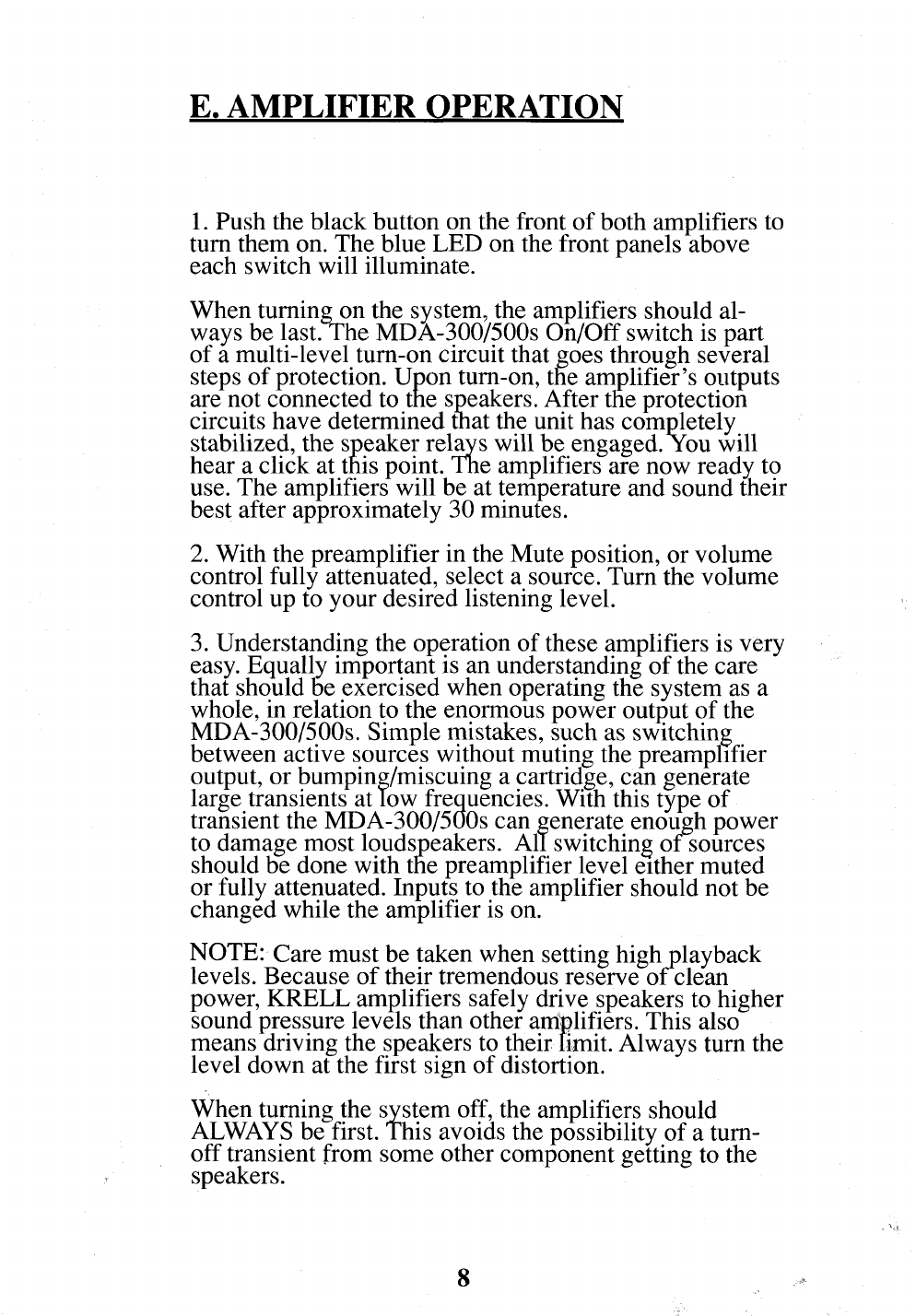
E. AMPLIFIER OPERATION
1. Push the black button on the front of both amplifiers to
turn them on. The blue LED on the front panels above
each switch will illuminate.
When turning on the system, the amplifiers should al-
ways be last.-The MDA-300/50.0s On/Off switch is part
of a multi-level turn-on circuit that goes through several
steps of protection. Upon turn-on, the amplifier’s outputs
are not connected to the.speak.ers. After ttie protect!on
circuits have determined that the unit has completely
stabilized, the speaker relays will be engaged.-You will
hear a click at this point. The amplifiers are now ready to
use. The amplifiers will be at temperature and sound their
best after approximately 30 minutes.
2. With the preamplifier in the Mute position, or volume
control fully attenuated, select a source. Turn the volume
control up to your desired listening level.
3. Understanding the operation of these amplifiers is very
e.asy. Equally important is an understanding of the care
that should be exercised when operating the system as a
whole, in relation to the enormous power output of the
MDA-300/500s. Simple mistakes, such as switching
between active sources without muting the preampfifier
9utput, or bumping/miscuing a cartridge, can generate
large transients at low frequencies. With this type of
transient the MDA-300/500s can generate enough power
to damage most loudspeakers. AII switching of sources
should be done with the preamplifier level e~ther muted
or fully attenuated. Inputs to the amplifier should not be
changed while the amplifier is on.
NOTE: Care must be taken when setting high playback
levels. Because of their tremendous reserve of-clean
power, KRELL amplifiers safely drive speakers to higher
sound pressure levels than other amplifiers. This also .
means driving the speakers to their fimit. Always turn the
level down at the first sign of distortion.
When turning the system off, the amplifiers should
ALWAYS be first. This avoids the possibility of a turn-
off transient from some other component getting to the
speakers.
8

















